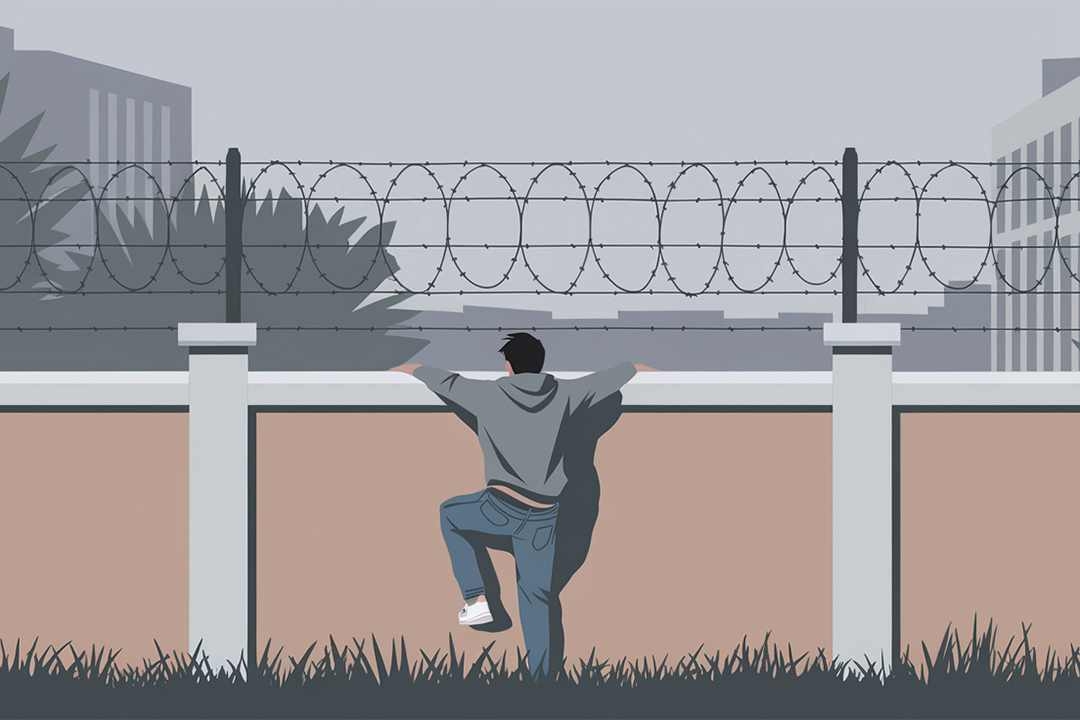Weekend Long Read: What Two Broken Feet Reveal About Abuse at a Chinese Martial Arts School
Listen to the full version

After dinner, 13-year-old Liu Qi and his classmate Xiao Ma climbed out of the window of their school’s second-floor cafeteria and jumped 5 meters down.
Sooner after, the wail of ambulance sirens echoed tore through the early November evening, just five days after Liu had arrived at the Shaolin Martial Arts School in Liaocheng, Shandong province.
Liu says he was terrified before jumping. Even though Xiao screamed in pain and clutched his legs after jumping, he still followed as it seemed the only way out — “Being crippled was better than staying there.”

Download our app to receive breaking news alerts and read the news on the go.
Get our weekly free Must-Read newsletter.
- DIGEST HUB
- Liu Qi, a student at Liaocheng Shaolin Martial Arts School, suffered severe injuries after jumping from a second-floor window to escape harsh conditions.
- The school is known for intense discipline, with students subjected to physical labor and punishment, leading to legal disputes over negligence and abuse.
- Despite efforts to regulate martial arts schools due to concerns about violence and harsh discipline, many remain operational as families seek solutions for "troubled" youth.
[para. 1][para. 2][para. 3] Thirteen-year-old Liu Qi attempted a daring escape from the Liaocheng Shaolin Martial Arts School in Shandong province by jumping out of a second-story cafeteria window, not long after his arrival. Terrified but feeling trapped, Liu followed his classmate Xiao Ma, who was already hurt from the jump, as they sought what seemed like the only way out. Liu’s experience is shared by many students in China’s martial arts schools, which are often harshly disciplined environments that families turn to in an attempt to reform "troubled" children. Experts, however, warn that such environments can be traumatizing and ineffective.
[para. 4][para. 5][para. 6][para. 7][para. 8][para. 9] Liu's grandmother, Qin Xiaoqing, sent him to the martial arts school hoping to reform him, labeling him as "troubled" after he began to refuse attending school. Liu's mother had left when he was six, and he had been raised by Qin as his father suffered from a mental illness. The family struggled financially but was eligible for some support after securing low-income status. Although warned by a relative, Qi Zhang, about the harsh conditions, Qin still sent Liu to the school at a high cost of over 3,900 yuan for a month. She signed a contract on arrival, after which Liu was quickly assimilated into the militaristic environment with no chance of seeing his grandmother again.
[para. 10][para. 11][para. 12][para. 13] Former student Yu Tian described the escapism Liu and other students like him sought from this gated environment, characterized by high barbed-wire fences and rigorous surveillance. Mobile phones were banned, and students could only return home briefly after meeting certain criteria. The daily regime was devoid of academic or martial instruction initially, focusing instead on menial tasks under severe supervision and punishment. Liu’s daily routine involved chores like sweeping leaves and cleaning toilets, with physical punishments like standing for extended periods or doing push-ups if expectations weren’t met. At night, students like Liu were confined to dormitory isolation, facing abuse and hoping for an opportunity to flee.
[para. 14][para. 15][para. 16][para. 17][para. 18] Yu Tian, in a similar predicament as Liu, had been sent to the school following a diagnosis of "internet addiction," receiving no substantial treatment during hospitalization before his enrollment. The martial arts school environment was suffused with backbreaking labor and corporal punishment for minor infractions, which sometimes led to severe injuries necessitating legal intervention, as with instructor Nian Guoming's imprisonment for violence. Such experiences left Yu traumatized, even as he moved toward university after withdrawing from the school upon revealing his plight to his father.
[para. 19][para. 20][para. 21] Martial arts schools like those in Dengfeng, Henan province, have become popular among rural families as a corrective system for rebellious youngsters. Parents, believing strict regimes could instill discipline, are drawn to such institutions, seeking a dual academic-martial development path for their children. However, success stories are limited; statistics show very few graduates advance to careers fitting their training, and many end up unemployed or in unrelated occupations. Parental expectations clash harshly with reality, especially when abuse is prevalent as Xu Mo discovered, leading to family-negotiated settlements acknowledging the abuse suffered.
[para. 22][para. 23][para. 24][para. 25] Despite evidence of violence and inefficacy, martial arts schools remain in demand partly due to the limited capacity of government correctional facilities. With reports of abuse making headlines, banning these institutions becomes a complex issue, especially as parents might not fully comprehend the associated risks or the futility of fear-based discipline, as experts like Peng Xiaohua note. It's crucial for parents to understand and address the root causes of behavioral issues, offering support rather than resorting to coercive measures.
[para. 26][para. 27][para. 28][para. 29][para. 30] After Liu’s escape attempt resulted in injuries, the school's response was negligent, leading to further legal action as his family sought compensation for the harm incurred. Liu's case went to trial, focusing on the school's negligence and its breach of educational rights, facing stiff resistance from the school's side. The trial underscored widespread problems in martial arts schools, prompting regulatory bodies to issue safety and accountability guidelines. Despite ongoing scrutiny, the Liaocheng Shaolin Martial Arts School remains operational, its practices yet unchecked by substantial reform.
- PODCAST
- MOST POPULAR





 Sign in with Google
Sign in with Google
 Sign in with Facebook
Sign in with Facebook
 Sign in with 财新
Sign in with 财新